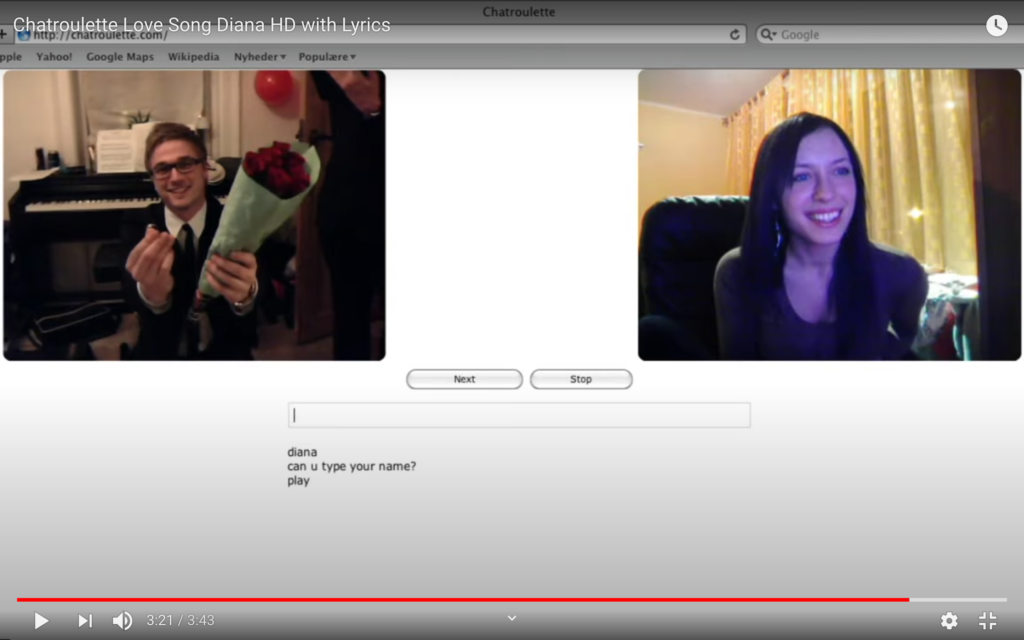“Zooming out” – entering a new perspective on Zoom
The glitches and strange insights we gained on Zoom – and how we might need to set new perimeters.
After yesterday’s discussion about how the prehistorical and societal development of video conferencing – both looking at the technological development in itself, both also on its interdependence with societal happenings, we joined today’s classes filled with enthusiasm for a new day of discussion. Recovered from with the visible effects of the hours spent in front of the screen (e.g. through a 14-hrs sleep), we were ready to take on a new perspective on this technology.
With great relief we greeted the idea of Paula Bialski about turning off our visual receivers – “hey, you are at home, make yourself comfortable”. A comfortable chair, a cup of hot coffee, and the mesmerizing background of the constellation of stars as the background of Paula’s presentation made us remember at this very moment where we are.
Embarking on a journey of socio-technological interactions, we started thinking about the several effects we experience consciously but also unconsciously about our current communication mode in Zoom. Stripped of any previously planned activities at Haniel Summer Academy, such as going to Berghain in Berlin, the only means of getting to know each other is via video-call. Instead of the exchange of the looks during a live conversation we have a small black square in front of us, staring at us for hours, extracting our private space to make from it a list of our faces and names, only leaving us with the possibility to communicate with our teachers utilizing a blue hand.
![]()
Lacking any personal interactions and means of building personal relationships, we feel distant and little engaged. This poses an issue since how comfortable we feel also affects the depth of discussions and understanding. On the one hand, the physical absence is a reason for withdrawal from the discussion. On the other hand, some may copy behaviors acquired through the use of social media, and their apparent anonymity or more accurately disconnection from reality provokes behaviors that would not be acceptable in a conference room or university class.
Feelings of absence during discussions can also be triggered by the fact that the program transforms natural communication into a series of simple commands that were originally intended to make communication easier. On the contrary, though this reduces the ability to participate in a conversation, which is another challenge for people seeking productive discussions.
An example of this may be a situation where a person participating in sessions and wanting to “take the stage” may not be noticed because he or she, follows the set of rules while others break. Since the basis of these relations is a visual language, her or his willingness to participate in the conversation expressed by a physically raised hand or by pressing a blue hand in the zoom can decide whether her opinion will be heard.
Venturing on the journey of different Zoom users, we realized that we needed to take a step away from our current working mode in Zoom and think about the different forms of using Zoom. We “Zoomed out”.
Looking at videos of Zoom bombing and pranks, we realized which glitches and issues emerge by using videoconferencing for our everyday life. By pressing the accept button to use our microphone and camera (which is currently an action required to join the discussion) people somehow lose control over what can happen to their image. Although application developers regularly introduce program improvements that are designed to ensure the safety of user’s data, these actions have a little influence on the availability of our personality to people participating in the conversation. While oftentimes a set of norms and unspoken rules is followed, people (un-)purposefully alter the way Zoom is used (just think about how often you have seen somebody being (semi-naked) on Zoom, that you normally just know in a suit). Thousands of personal Zoom videos are viewable on the open web. Videos include one-on-one therapy sessions; a training orientation for workers doing telehealth calls that include people’s names and phone numbers; small-business meetings that include private company financial statements; and elementary school classes, in which children’s faces, voices, and personal details are exposed.
Many of the videos include personally identifiable information and deeply intimate conversations, recorded in people’s homes. Other videos include nudity, such as one in which an aesthetician teaches students how to give Brazilian wax. Many of the videos appear to have been recorded through Zoom’s software and saved onto separate online storage space without a password. Whether we can relax during the meeting depends just as much on trust in the person on the other side of the screen as in the software itself.
While these stories paint a picture of the hidden threats of Zoom, there are also other perspectives that we can take on. Look for example at this video of Chatroulette, where a total stranger sings a love song for Diana.
Check out the video for yourself 🙂
As we can see it is important to gain a deeper understanding of the use of Zoom, the borders and parameters we may need, and the rules necessary for building personal interaction and relationships. Maybe we should just meet for an Aperó tomorrow? Drinks on me 😉
We are looking forward to furthering this journey with you.
See you tomorrow!
Alma, Bea, Davide, Karolina & Oskar
